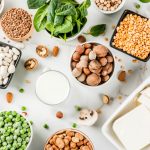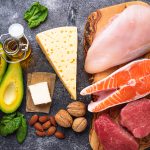Food to Fuel Your Workout
Posted by Jessica Penner

Do you need to strategically plan your food to improve your work out? That depends. Are you going for a leisurely walk around the block, or doing something more strenuous such as spending a couple of hours on the tennis court?
As a rule of thumb, unless you’re elevating your heart rate for more than an hour, or doing some heavy lifting, there’s no need to adjust your diet. Your body can convert the food you typically enjoy into the energy it needs for light exercise.
For a workout that is longer than an hour or involves heavy lifting, you’ll want to pay attention to what you eat. There are two key moments: before and after your workout!
Fuel Up Before You Workout
What you eat before a work out will directly impact your short game, ie. your performance while you work out. In order to maximize your energy levels and performance, ensure your body has energy available to use during your workout:
- If your last meal was within 2-3 hours before your workout… no snack needed!
- If it has been more than 2-3 hours since the last meal, plan to have a snack about 1 hour before working out. This allows your body to digest and process the food so that you don’t experience indigestion during your activity.
Choose a snack that is higher in carbs, moderate in protein, but lower in fibre and fat. Fat and fibre slow down your digestion. That’s good at other points in the day when you went to keep your hunger at bay, but when you’re working out, you don’t want to be dragged down by a full stomach! You want that energy to be available to your body.
Here are some snacks that will get you the power and performance you’re looking for:
- Fruit smoothies
- Pasta in tomato sauce
- Cereal
- 1% or skim milk
- Yogurt with fruit
- Cottage cheese and fruit
- Poached eggs on dry toast
- Lean meat (chicken breast, ham) in a wrap
Fuel Up After You Workout
What you eat after you work out is going to impact your long game, ie: your recovery.
If your next workout is within 24 hours, eat within 30 minutes to replenish your muscle’s energy stores.Choose a snack with a carb-to-protein ratio of 3:1 or 4:1. Here are some examples with this ideal ratio:
- chocolate milk
- hard-boiled egg with toast
- greek yogurt and fruit
- apple and peanut butter
- sweet potato & cheese
- edamame beans
- trail mix
- cheese & crackers
- tuna & crackers
If your next activity/training session is after 24 hours have passed, simply eat when you get hungry, or wait until your next planned meal or snack.
How Much Protein to Fuel Up?
While your before and after snacks are the most important, your total protein intake throughout the day is important as well! Working out stresses the muscles, which need to be rebuilt using protein from food.
If you consider yourself fairly active, you’ll want to aim for 1.2 to 2g of protein per kilogram of body weight each day. For a 180lb person, that would mean 98g to 163g daily. If you have three meals and a snack each day, that’s 25g to 40g each time you eat.
To help you meet your protein goal, try some of these foods:
| Food | Protein (g) |
| I cup of cow’s milk | 9g |
| ¼ cup skim milk powder | 6g |
| 100g Greek or yogurt or Skyr | 8-10g (check label) |
| ½ cup cottage cheese | 14g |
| 1 egg | 7g |
| ½ cup egg whites | 14g |
| 100g extra firm tofu | 14g |
| ¾ cup black beans, chickpeas, and lentils | 6.5-7.5g |
| ¼ cup almonds | 7g |
| ¼ cup roasted pumpkin seeds | 17g |
| 1 cup regular or quick oats | 13.5g |
| 75g chicken breast | 27g |
| 75g pork tenderloin | 21g |
| 75g light canned tuna | 19g |
| 75g pink salmon | 19g |
That chart has a lot of measurements to give you an idea of how much protein you will get from each food, but there’s no need to measure out a specific amount of food. Eat until you are satisfied!
Eat slowly and keep checking in with your stomach throughout your meals to gauge whether your body needs more food or has had enough.
Enjoy your food, and your exercise, to the max!












